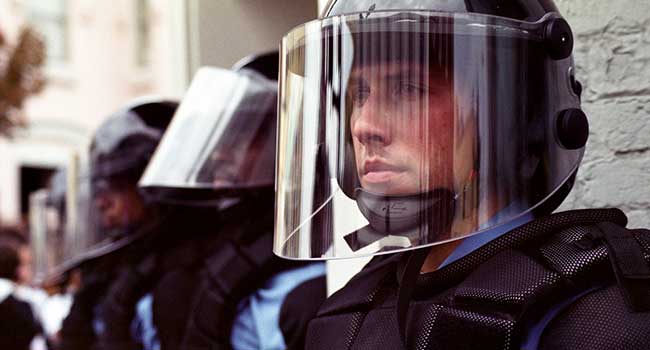
The Pros and Cons of Covert and Overt Armor for Security Personnel
- By Thomas Bowman
- Jul 13, 2016
Security personnel encounter many different types of risks on a daily basis. Due to the unpredictability of the job, guards often require different types of bullet or stab proof vests depending on the threat they are expecting to face.
So, what are the different kinds of protective gear security officials can choose from? For starters, there is covert and overt armor.
Put simply, covert armor refers to bullet or stab proof vests that can be worn beneath other clothing, keeping the vests invisible to the outside word, whilst still offering a layer of protection for the security personnel wearing them. Overt vests on the other hand, can be worn on top of other clothing, often becoming part of a uniform, and clearly marking out security personnel to the public.
Both covert and overt bullet proof vests have their own individual advantages and disadvantages for today’s security personnel.
Covert Armor
For security personnel, covert armor will be important when discretion is advised in terms of security that may be undercover or working in close protection of an individual. Because covert bullet and stab proof vests can remain hidden beneath other clothing, they can help to keep members of covert security teams both hidden and protected as they still cover a number of NIJ protection levels.
Not only can covert vests be worn comfortably beneath a standard uniform, but they can retain flexibility and regulate heat whilst being worn. Some covert vests can even be fitted with extra SAPI plates in order to give them an extra layer of protection, should there be a danger of a high level of ballistic threat on a given exercise.
Ideal in professional, covert security situations, covert bullet and stab proof vests allow security personnel to remain comfortable, cool and flexible whilst protecting both themselves and whoever they are guarding on any given task. Security staff can walk freely around on their duty with an added layer of protection against certain types of ballistic fire and knives, but invisible to the naked eye.
Overt Armor
On certain tasks, a client may make it clear that they want a visible presence of security. This could be for special clients in the public eye or for events whereby visible security will act as a deterrent towards any threats that may have happened. Sometimes just the sight of security personnel in heavy duty protective bullet proof and stab proof armor is enough to stop trouble in its tracks.
Overt vests and armor are available up the maximum levels of protection against ballistic fire and knifes/blades that the NIJ regulate. They are often bulkier than covert vests and heavier, as they are engineered using various layers of Kevlar in order to disseminate gun fire or to trap a knife or edge blade weapon.
They can be fitted with SAPI plates and are often manufactured to be durable and hard standing through al weather conditions. They often have technology to either cool down or heat up the security personnel using them, this is so that they remain comfortable and protected across all environments.
Overt armor has connotations of preparedness and authority. It shows potential threats and attackers that your security personnel are professional, prepared and confident in the face of danger.
Although this type of armor may be heavier than covert bullet and stab proof vests, they offer more protection and can save lives against much heavier types of ballistic threat or knifes/blades.
Therefore it’s important to consider threat levels, security perceptions, weather conditions, and staffing situations when you rig out your security personnel with covert or overt armor. Most security agencies will stock up their inventory with both types of armor and have meetings with clients and high level staff to decide on what kit to send out in line with the perceived level of threat for each task.
Both covert and overt armor can be found at SafeGuard Clothing, a company that has been providing over 5,000 bullet and stab proof vests a year to security, law enforcement and military personnel for over ten years.
About the Author
Thomas Bowman is the communications manager at SafeGuard CLOTHING, he strives to provide the most accurate and valuable information from his industry.